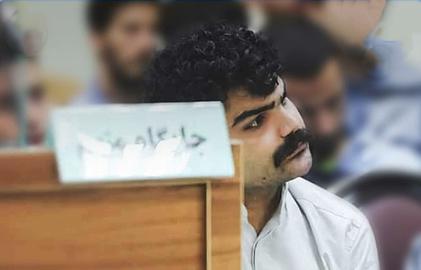
This week, IranWire published a collection of articles and films looking at public executions and Iran’s application of the death penalty. Below, we talk to Amnesty International’s Bahareh Davis about the recent increase in executions, so-called crimes against national security and the communities affected.
See the end of this article for links to Azadeh Moaveni’s piece on the psychological damage of public hangings, Mahrokh Gholamhosseinpour on the execution of minors, Maziar Bahari's remarkable documentary on the serial killer Saeed Hanaei and more.
Can you give our readers a general overview of the situation in Iran at the moment with regard to executions? According to Amnesty’s figures, how many people were executed in 2013? How does it compare with 2012?
The Iranian authorities do not provide official statistics on their use of the death penalty and there is credible evidence that a number of executions are carried out in secret. According to Amnesty International figures, there was a significant rise in the number of executions in 2013 as compared to 2012, when the authorities carried out at least 544 executions, 314 of which were announced officially.
Since Hassan Rouhani was elected in June 2013, there has been an increase in the number of executions. Why do you think executions are on the rise in Iran?
Some commentators have maintained that sanctions have contributed to a general state of poverty in the country, indirectly increasing social ills such as drug trafficking. If we take into account that the majority of executions carried out each year are for drug-related offences, which mainly affect the most disadvantaged sections of society, we may be able to offer a possible explanation. However, in the absence of official data, particularly on the number of death sentences issued each year, this remains merely an assumption.
Who is being targeted? Is there any trend in terms of the people being executed – are they from particular minority groups or accused of particular crimes?
We understand that those most at risk of execution in Iran are from the most disadvantaged groups in society: members of ethnic minorities that suffer from widespread discrimination, foreign nationals who come from countries where economic opportunities are limited, in particular Afghans, and impoverished members of the majority Persian-speaking community. For example, if you look at the interview, published in Shargh Newspaper [read here, in Persian], with the wife of Alireza M, an alleged drug offender who survived execution after eight minutes of hanging, you can see how poverty seems to have driven him towards drug smuggling. In fact, many of those on death row for drug offences may have resorted to drug smuggling to feed their families.
Members of ethnic minority groups such as Ahwazi Arabs, Kurds and Baluchis, in particular, appear to be the target of the politicized use of the death penalty. There are many Sunnis from Iran’s Kurdish minority who are under the sentence of death in Raja’i Shahr and Ghezel Hesar prisons. Most of them have been charged with national security crimes such as the vaguely-worded charges of “enmity against God” (moharebeh) and “corruption on earth” (ifsad fil-arz) and sentenced to death following trials marred by irregularities. Currently, there are at least four of these prisoners who are at imminent risk of execution, as their death sentences have been upheld by the Supreme Court. Jamshid Dehghani, his younger brother Jahangir Dehghani, Hamed Ahmadi and Kamal Molayee were sentenced to death in November 2010 by a Revolutionary Court in Tehran and were denied the assistance of a lawyer during their trial. Following their arrest in 2009, they were held in solitary confinement for months. Amnesty International understands that they were tortured or otherwise ill treated while in pre-trial detention. They were threatened with the arrest of family members and were forced to sign papers without being allowed to read them.
IranWire recently reported on the public execution of a man convicted on drug charges. Do these seem to be on the increase too, and what, in your view, are the authorities trying to achieve with these public punishments?
The majority of the public executions in Iran appear to be for crimes such as rape and murder, and it seems that the authorities rely on the death penalty and in particular public executions to deter others from committing similar crimes. However, there is no clear evidence showing that the death penalty or resorting to public executions have had any identifiable effect in reducing the rate of violent crimes or alleviating drug trafficking.
What do we know about the prevalence of forced confessions in some of these executions?
Generally the courts in Iran accept forced “confessions” as evidence. Many of those executed are tried in grossly unfair proceedings where their “confessions” are used against them as evidence. The courts frequently dismiss allegations of torture or other ill treatment and fail to order investigations into claims that confessions were made under duress. That is also happening in drug-related offences, as well as alleged crimes against national security. In January 2014, Hadi Rashedi and Hashem Sha’bani Nejad, both members of Iran’s Ahwazi Arab minority, were executed in secret. They, along with three others, Mohammad Ali Amouri, Sayed Jaber Alboshoka and the latter’s brother, Sayed Mokhtar Alboshoka, had been sentenced to death in July 2012 by a Revolutionary Court. They were all convicted of national security charges such as “enmity against God”, “corruption on earth”, "gathering and colluding against state security” and “spreading propaganda against the system”. We know that before their trial, Hadi Rashedi and Hashem Sha’bani Nejad were shown “confessing” on a state television channel, in violation of international standards for fair trials. As of today, the other three men remain at risk of execution.
It’s clear that in many of these cases, prisoners are not being given access to legal counsel. Can you say a bit about the situation at the moment with regard to the legal rights of prisoners?
Again, in the absence of official data it is hard to gauge in how many cases exactly prisoners have not been allowed access to legal presentation. However, over the past decades, Amnesty International has recorded numerous cases in which the Iranian authorities have denied access altogether or limited detainees the right to legal presentation during pre-trial detention or the trail itself. Restrictive interpretations of certain Articles in the Code of Criminal Procedures allow the authorities to deny detainees access to a lawyer from the time of arrest until such time as the interrogation has been finished. It is also important to bear in mind that those convicted under the country’s Anti-Narcotics Law do not have a right to appeal. Their sentences are subject to confirmation by the head of the Supreme Court or the prosecutor general, who can revise or quash it if it contravenes Islamic law or the judge was considered incompetent.
The rise in executions has been described by some as a power battle, with hardliners staging a backlash against some of the expectations for reform that followed Rouani's election. From your perspective, how is this being played out?
I think the real question here, regardless of whether the power battle has contributed to the rising number of executions, is how the Iranian authorities as a whole are administrating and implementing justice in Iran. As a state party to international treaties such as the International Covenant on Civil and Political Rights, Iran must take steps to abolish the death penalty and, pending that, it must ensure that this ultimate punishment may only be imposed for the “most serious crimes” after fair trials, and must not be a mandatory penalty.
Are there other times in recent history where we've seen similar trends with regard to executions in Iran?
It seems that the number of executions has rocketed since mid-2010 and they have continued at a high rate. Amendments to the Anti-Narcotics Law that came into force in January 2011- which effectively denies those sentenced to death for drug offences the right to appeal - seem to have contributed to this increase in numbers.
The Social Trauma of Death as Spectacle
Why Would You Attend a Hanging?
Put Death Penalty to a Referendum: an Interview with Emadeddin Baghi
"Since I resigned, I sleep better.”
The Value of Human Life: An Interview With Mohammad Mostafaei
Mohammad Mostafaei’s 10 Steps For Abolishing The Death Penalty
visit the accountability section
In this section of Iran Wire, you can contact the officials and launch your campaign for various problems

























comments